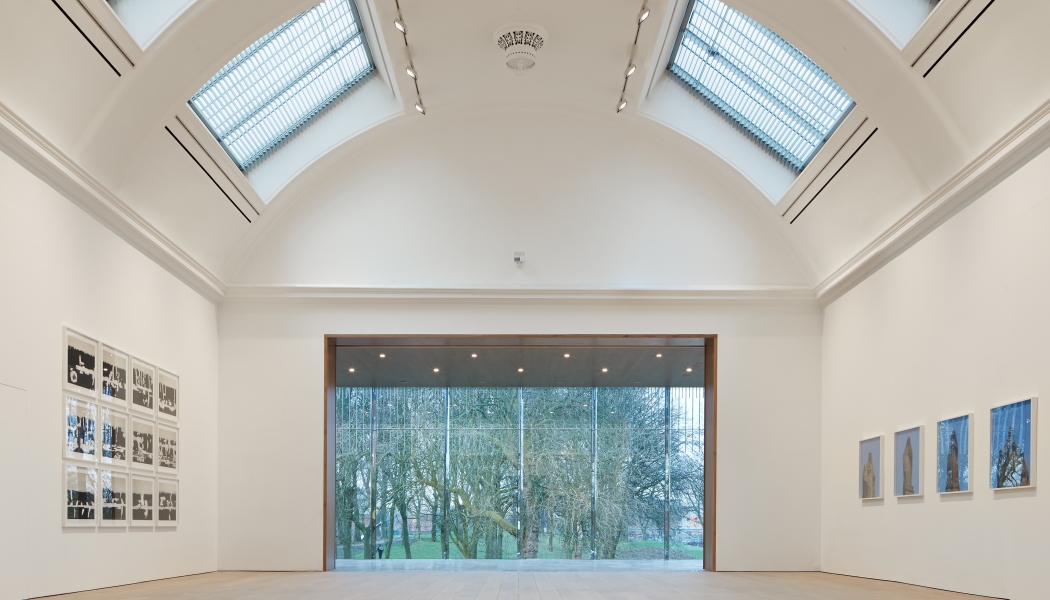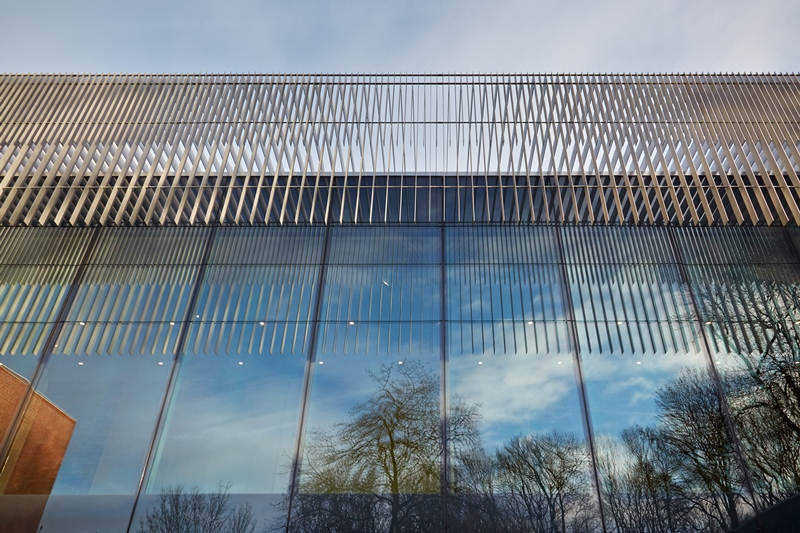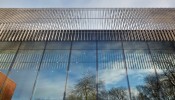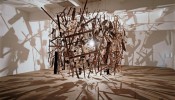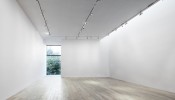When director Maria Balshaw joined the Whitworth Art Gallery in 2006 visitor figures for the preceding year were 82,000 and she set about transforming its fortunes by moving it into the 21st century, increasing visitor numbers, better engaging with its community and somehow connecting to the park around it.
By the time the gallery closed for its £15m redevelopment in 2013 visitor figures had risen to 192,000. On its opening weekend 18,000 (more than the whole of February 2013) flooded through its Victorian front doors and its new park entrance, which Balshaw believes will be the key to how visitors are introduced to the gallery from now on.
“I was brought in to take the Whitworth into next century of its life and help the university and the city to be international players,” says Balshaw. “At that stage Whitworth was recognised for its important collection, however, it was not as well-visited or connected to its local community or to tourists coming into the city.”
She says the team wanted to build new wings that were visually appealing and where visitors could stand in the old part of the Whitworth and see out into the park in a way they couldn’t before, and in the same way people could see in.
The Whitworth Art Gallery was founded in 1889 by Robert Darbishire with a donation from Sir Joseph Whitworth, and became The Whitworth Institute and Park. Since then it has had many transformations with galleries being built inside the structure and then in the 1960s John Bikerdike successfully redesigned the Whitworth’s gallery spaces.
The latest redevelopment has been a journey of discovery for the staff and architects Muma (McInnes, Usher, McKnight Architects) as the old building has been renovated revealing hidden features and artworks, and a promenade with two wings on the west side has been built to open up the main gallery to Whitworth Park in an extraordinary way.

“Within the first six months I realised what we didn’t do was embrace the park that surrounded the gallery,” says Balshaw. “There were insufficient spaces to showcase the depth and strength of the collection and so a conversation began with stakeholders, the university, visitors and the Heritage Lottery Fund (HLF) to see if they were interested in expanding the gallery and release capital funds.
“The resounding answer was yes!”
The Whitworth is part of the University of Manchester, located two miles south from the city centre and is situated near the economically challenged neighbourhoods of Moss Side, Hulme and Rusholme.
“We saw this as unique opportunity to engage with communities that would not otherwise be used to engaging with such an organisation,” says Balshaw. It has been a long process – with a bid submitted to HLF for £8.5m in early 2007 and granted in early 2011 – but an ultimately successful one.
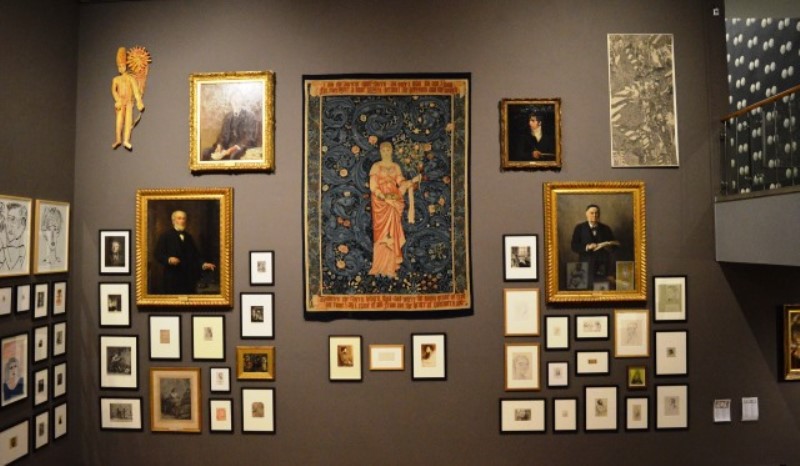
Once given the reigns Muma set about renovating the old part of the Whitworth and in its top floor uncovered a series of hammer beam struts covered by a false ceiling and ornate wood panelling behind plasterboard walls, once part of a grand hall.
For the past 50 years the space has been split into staff offices, a library, a print room, and collection storage. This was where Muma’s practical ingenuity came to the fore, as they excavated three feet into the basement and created new store rooms for the collection and a collection centre. This allowed them to clear the grand hall of clutter and create a new space, envisaged by Balshaw, for talks, recitals, workshops, toddler groups and film screenings.
The redevelopment of the basement, in addition to the new promenade and wings, has seen the construction of a new study centre and dedicated learning studio, a new transparent café, and landscape gallery.
Cultural hub
“What we wanted was to become a cultural hub for our neighbourhood, a social space for people to use in many different ways,” says Balshaw. “Between the two new wings we capture a piece of the park and have created an art garden – you now start seeing art before you come into the gallery and the whole space becomes part of the environment and is a more accessible experience.”
As well as this Muma have made the existing building work better by building a new loading bay in the north face of the gallery with a new loading lift, an art transit and quarantine space as well as a façade that can be opened up to transport larger objects into the gallery.
“Before we worked on the building and changed it most of the deliveries were made through the front door where there was a café, shop and the visitors, and this was also where principal elements of art would be brought in,” says Stuart McKnight of Muma, which has previously worked on a restaurant at the Royal Academy of Arts and the new Medieval & Renaissance Galleries at the Victoria and Albert Museum.
“So everything was coming through the front door and it was very difficult to run a gallery in that way,” says McKnight. “Somehow we have found that by wrapping the back of the building and creating this new circulation route we have been able to unlock such potential that although we have extended by a third we have actually doubled the space that is accessible to the public.”

Muma worked with many contractors on the project including Ramboll UK, which developed bespoke stainless steel mullions that support the cafe roof steelwork and allow the space to appear to hover among the trees in the park.
“The wings are connected by a glass promenade gallery and this really allows visitors to engage fully with the park,” says McKnight. Balshaw says that during the development the Whitworth was the ‘least closed museum’ and a series of events organised by the gallery’s learning and engagement team has ensured that new audiences were found and interest in the new gallery was palpable in the city.
“As well as transforming our building our most ambitious project [during building work] saw a pop-up gallery in Selfridges Manchester, seen by more than 200,000 shoppers as part of a Festival of the Imagination,” says Esmé Ward, the Whitworth’s head of learning and engagement.
Off-site activities
The team ran extensive off-site activities at 30 sites across the city, directly engaging 6,900 people of all ages (in space as diverse as hospital wards and care homes to youth centres, shops and pubs). “Much of this engagement was in-depth and enabled us to develop close partnerships, which now have fed directly into our programmes. We worked in new environments, making lots of friends. Our adult programmer worked at a residential care home, exploring how older people want to connect with the gallery.”
As well as this the gallery’s arts for health manager strengthened partnerships with Greater Manchester hospitals, developing creative work supporting rehabilitation from stroke, and programmes for people living with dementia. And the formal education staff spent extended time in schools and colleges and the gallery’s student engagement officer worked with the Students’ Union, developing a range of student-curated programmes and a Student Weekender that staged cultural activities across campus.
One of the major objectives of the Whitworth’s redevelopment was to be able to show the widest range of art. The Whitworth is renowned for its landscape paintings such as William Blake and JMW Turner, and a new landscape gallery has been built in the one of the new wings, which has been strengthened to take loads of more than 50 tonnes.
“The gallery has a large collection of 18th and 19th century landscapes and we wanted a space where we could show those watercolours and also think what newer landscapes could be shown today,” says Bryony Bond, curator of temporary exhibitions.
“So we were really excited to be working with [Chinese artist] Cai Guo-Qiang, as the way that he thinks about landscapes and works to create installations is very different and we specifically thought about his Unmanned Nature (2008).”
Guo-Qiang created this masterpiece by shaking gunpowder into the shapes of mountains and valleys and then lighting it. The 45m artwork, which has never been shown outside of Japan, where it had its only previous public viewing, wraps around the new landscape gallery with a pool of water weighing 25 tonnes in the middle of the floor.
“We have wanted to work with Cai Guo-Qiang since Unmanned Nature was made in Japan and so we sent plans of the new gallery and his studio got back to say the two were a perfect fit,” says Bond.
“The water is extremely heavy which is what has caused it not to be shown elsewhere. The landscape gallery was designed to take that kind of load, so it’s an extremely flexible space that we can do extraordinary things with extraordinary artists.”
One of those extraordinary artists that the Whitworth has been working with as part of its reopening is Cornelia Parker who has recreated some of her signature work such as Cold Dark Matter: An Exploded View (1991) into the three main ground floor galleries and her Rodin’s Kiss with a mile of string entitled The Distance: A Kiss With Added String is now visible from the park.
“I’m from Cheshire and Manchester is the nearest cultural big city and I’m glad to get my hands on this beautiful new space,” she says. “I think galleries should be great places to come and meet and see the art but also where people can have respite from the onslaught of the stuff we have to deal with.”
Grand opening
For the grand opening night Parker worked with University of Manchester’s Kostya Novoselov, a Nobel Prize winning Scientist for his work on graphene, as a way of cementing the gallery, its art and artists, with the university.
“Because I have been interested in drawing and the pencil and the idea of art making, I realised there must be graphene in all these master drawings in the Whitworth’s collection so I asked Kostya if it was possible to extract some of the graphite from them and use it for the opening,” she says.
“He removed a few little stray flakes of graphite, from a Blake painting among others, those and made some graphene. This was then used as a sensor that would be triggered by just a breath to set off a firework display on opening night. So a breath on Blake’s graphene set off a firework display inspired by his poetry which is full of meteor and comet references and fits in with my series going back to 1995 of meteors landing.”
Parker says that this experiment ties in with Kostya being a new visionary and Blake being an old one, and it also lights the fuse for new and exciting times at the Whitworth Art Gallery.

